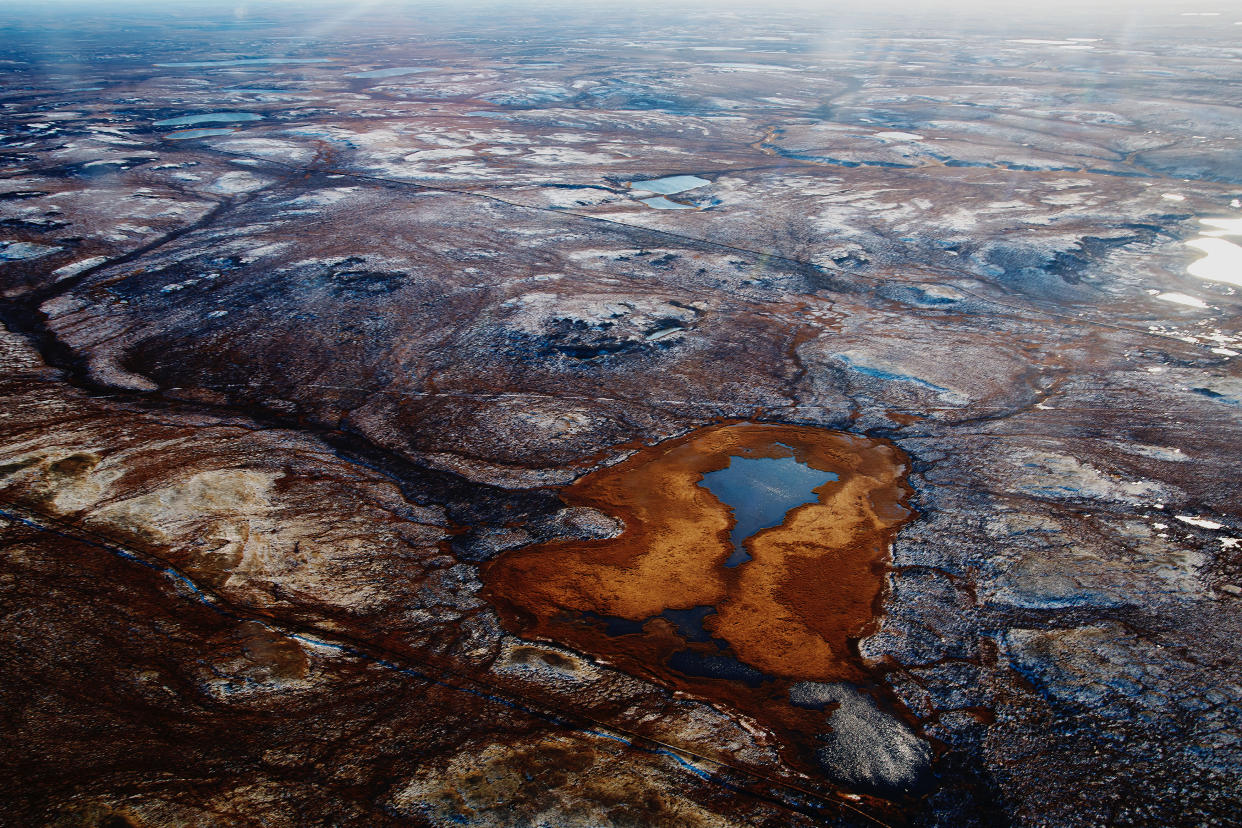Siberian tundra 'could disappear by 2050' due to climate change

The Siberian tundra could have vanished entirely by the middle of this century, researchers have warned.
Temperatures in the Arctic are soaring due to climate change, and larch forests are steadily marching north into the territory of the tundra.
Researchers at the Alfred Wegener Institute in Germany ran computer simulations and found that even if climate change measures are taken, just 30% of the Siberian tundra – home to unique animals and plants – will survive by 2050.
In other scenarios, the Siberian tundra will vanish entirely. The study was released in the journal eLife.
In the Arctic High North, the average air temperature has risen by more than two degrees Celsius over the past 50 years – far more than anywhere else.
This trend will only continue, the researchers believe.
Read more: Melting snow in Himalayas drives growth of green sea slime visible from space
If ambitious greenhouse-gas reduction measures (Emissions Scenario RCP 2.6) are taken, the further warming of the Arctic through the end of the century could be limited to just below two degrees Celsius.
If the emissions remain high (Scenario RCP 8.5), by 2100 we could see a dramatic rise in the average summer temperatures in the Arctic by up to 14 degrees Celsius over today's norm.
"For the Arctic Ocean and the sea ice, the current and future warming will have serious consequences," said Professor Ulrike Herzschuh, head of the Polar Terrestrial Environmental Systems Division at the Alfred Wegener Institute, Helmholtz Centre for Polar and Marine Research (AWI).
"But the environment on land will also change drastically. The broad expanses of tundra in Siberia and North America will be massively reduced, as the tree-line, which is already slowly changing, rapidly advances northward in the near future. In the worst-case scenario, there will be virtually no tundra left by the middle of the millennium.
“In the course of our study, we simulated this process for the tundra in northeast Russia.
“The central question that concerned us was: which emissions path does humanity have to follow in order to preserve the tundra as a refuge for flora and fauna, as well its role for the cultures of indigenous peoples and their traditional ties to the environment?"
Read more: Why economists worry that reversing climate change is hopeless
The tundra is home to a unique community of plants, roughly 5% of which can only be found in the Arctic.
Typical species include the mountain avens, Arctic poppy and prostrate shrubs like willows and birches, all of which have adapted to the harsh local conditions of brief summers and long, arduous winters.
It also offers a home for rare species such as reindeer, lemmings and insects like the Arctic bumblebee.
For their simulation, Herzschuh and AWI modeller Dr Stefan Kruse employed the AWI vegetation model LAVESI.
Read more: A 1988 warning about climate change was mostly right
"What sets LAVESI apart is that it allows us to display the entire tree-line at the level of individual trees," Kruse said.
"The model portrays the entire lifecycle of Siberian larches in the transition zone to the tundra – from seed production and distribution, to germination, to fully-grown trees. In this way, we can very realistically depict the advancing tree-line in a warming climate."
"At this point, it's a matter of life and death for the Siberian tundra," said Eva Klebelsberg, project manager of Protected Areas and Climate Change / Russian Arctic at the WWF Germany, with regard to the study.
"Larger areas can only be saved with very ambitious climate protection targets. And even then, in the best case there will ultimately be two discrete refuges, with smaller flora and fauna populations that are highly vulnerable to disrupting influences."
Watch: Venice climate change dilemma - save the lagoon, or save the city?


